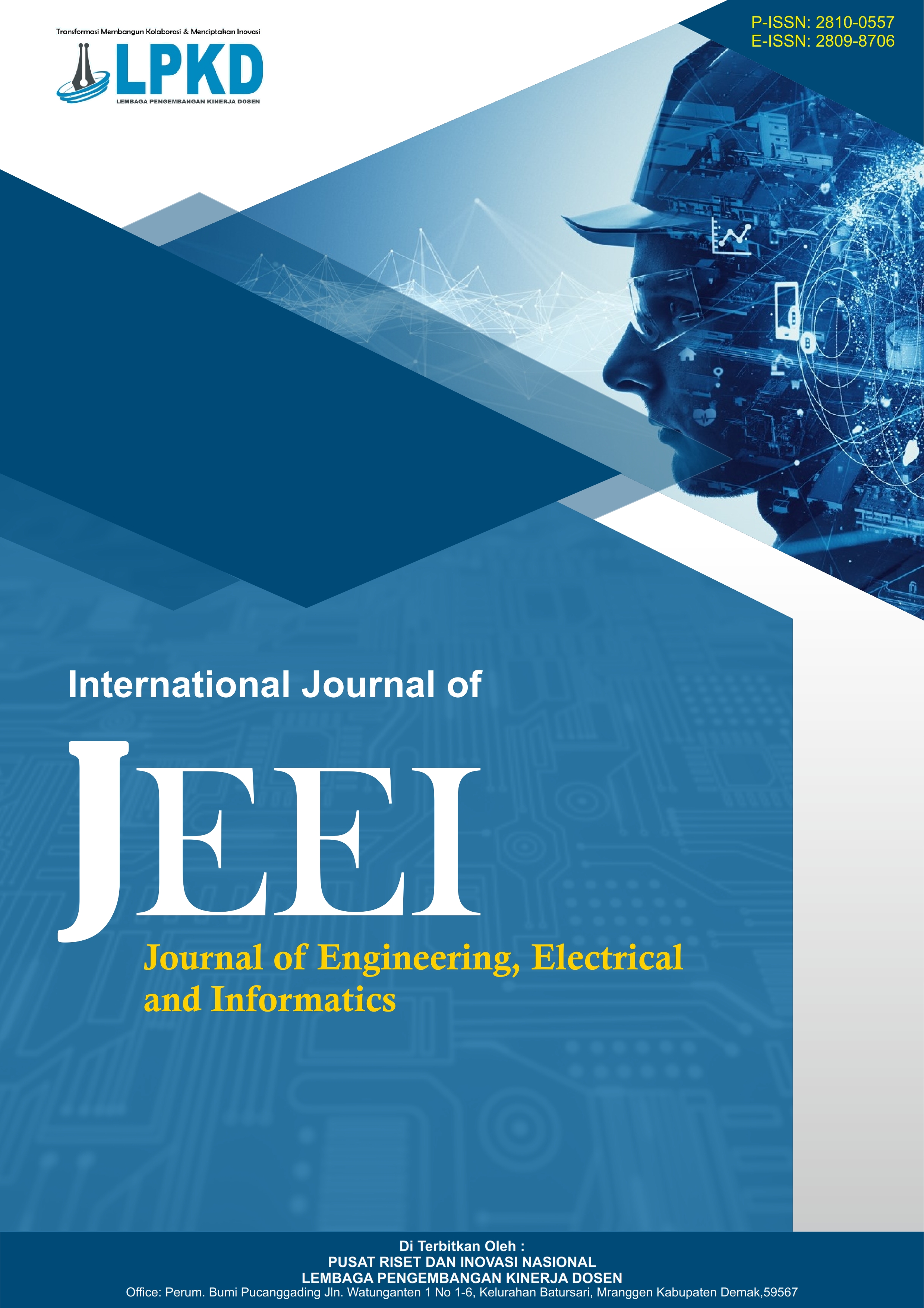Identification of Supporting Architectural Ornaments of the Old City Semarang Site
DOI:
https://doi.org/10.55606/jeei.v5i2.3835Keywords:
Architectural Styles of the Buildings, Supporting Building Ornaments, The Old City of Semarang SiteAbstract
The Old City of Semarang is an important part of the Semarang Old Town area, which is also designated as a Cultural Heritage Site. This area features distinctive European architecture that has adapted to the tropical climate of Semarang. This uniqueness gives the Old City buildings different characteristics and styles, depending on the period or year of construction. This study aims to explore and preserve the historical character of the Old City area by preserving supporting architectural elements, such as staircase ornaments and floor patterns. The research method uses descriptive qualitative analysis, by depicting the conditions in the field based on data obtained from observation and research. Overall, the results of this study show that the architectural elements of the supporting buildings in the Old City of Semarang reflect specific styles from different periods. In the 18th century, buildings in this area used the Rococo style. In the late 18th and early 19th centuries, Neo-Classical style was adopted. The early 19th and early 20th centuries saw the use of Neo-Renaissance style, while in the 20th century, the buildings in this area showed influences of modern architecture.
References
Art-Nouveau-tp.pdf, n.d.
Ashadi, Peradaban dan Arsitektur Modern, Jakarta: Arsitektur UMJ Press, 2016, Issue March.
Devi, Y. and Andereas, P. S., “Gaya Desain pada Elemen Pembentuk Ruang dan Elemen Transisi Interior Gereja Santo Antonius Purbayan Surakarta,” Jurnal, vol. 1, no. 1, pp. 1–8, 2013.
Dwisiwi, S. and Agustin, S. A., “Perancangan Buku Visual Bangunan Cagar Budaya Kota Semarang sebagai Salah Satu Bentuk Pelestarian,” Jurnal Sains dan Seni ITS, vol. 9, no. 2, 2021. [Online]. Available: https://doi.org/10.12962/j23373520.v9i2.56892
Kriswandono, A., Sejarah dan Prinsip Konservasi Arsitektural Bangunan Cagar Budaya Kolonial, Semarang: Institut Konservasi ERMIT, 2014.
Nadya, J. and Ikaputra, I., “Karakter Wujud Bangunan Arsitektur Stasiun Kereta Api Lama (Heritage) di Jalur Cibatu-Cikajang,” Modul, vol. 20, no. 2, pp. 134–144, 2020. [Online]. Available: https://doi.org/10.14710/mdl.20.2.2020.134-144
Peraturan Daerah Kota Semarang No. 5 Tahun 2020 Tentang RTRW Kota Semarang Tahun 2011–2031.
Santoso, I. N. and Santosa, A., “Gaya Desain Kolonial Belanda dan Cina pada Interior Hotel Ganefo Surabaya,” Jurnal, vol. 1, no. 1, pp. 1–13, 2013.
Surat Keputusan Menteri Pendidikan dan Kebudayaan Republik Indonesia No. 682/P/2020.
Surat Keputusan Walikota Semarang No. 640/395 Tahun 2018 Tentang Penetapan Status Cagar Budaya Kawasan Kota Lama Semarang.
Tandal, A. N. and Egam, I. P. P., “Media Matrasain,” Media Matrasain, vol. 8, no. 1, pp. 29–39, 2011.
Tejo, L. M. and Wibowo, M., “Studi Gaya Vintage pada Interior Cafe di Surabaya (Studi Kasus: Canary Cafe, DailySweet Cafe dan Stilrod Cafe),” Intra, vol. 2, no. 2, pp. 840–853, 2014. [Online]. Available: https://publication.petra.ac.id/index.php/desain-interior/article/view/2296
Undang-undang No. 11 Tahun 2010 Tentang Cagar Budaya.
Wahyuddin, S., Heryana, N., Yusmah, Zulkarnaini, Sulistiyani, A. S. Atichasari, Simarmata, N., Hadawiah, Triwijayati, A., and Asroni, A., Metode Riset Kualitatif, vol. 156, 2023.



.png)
.png)


